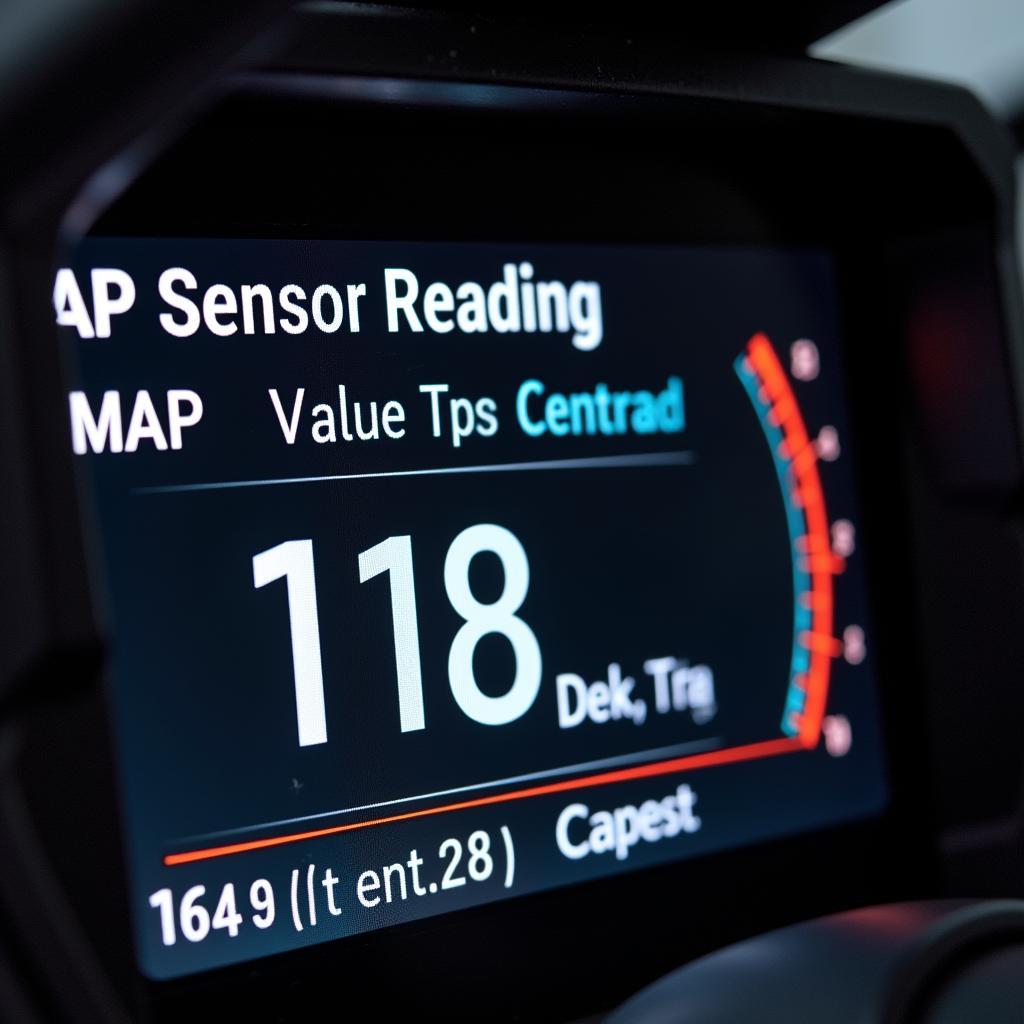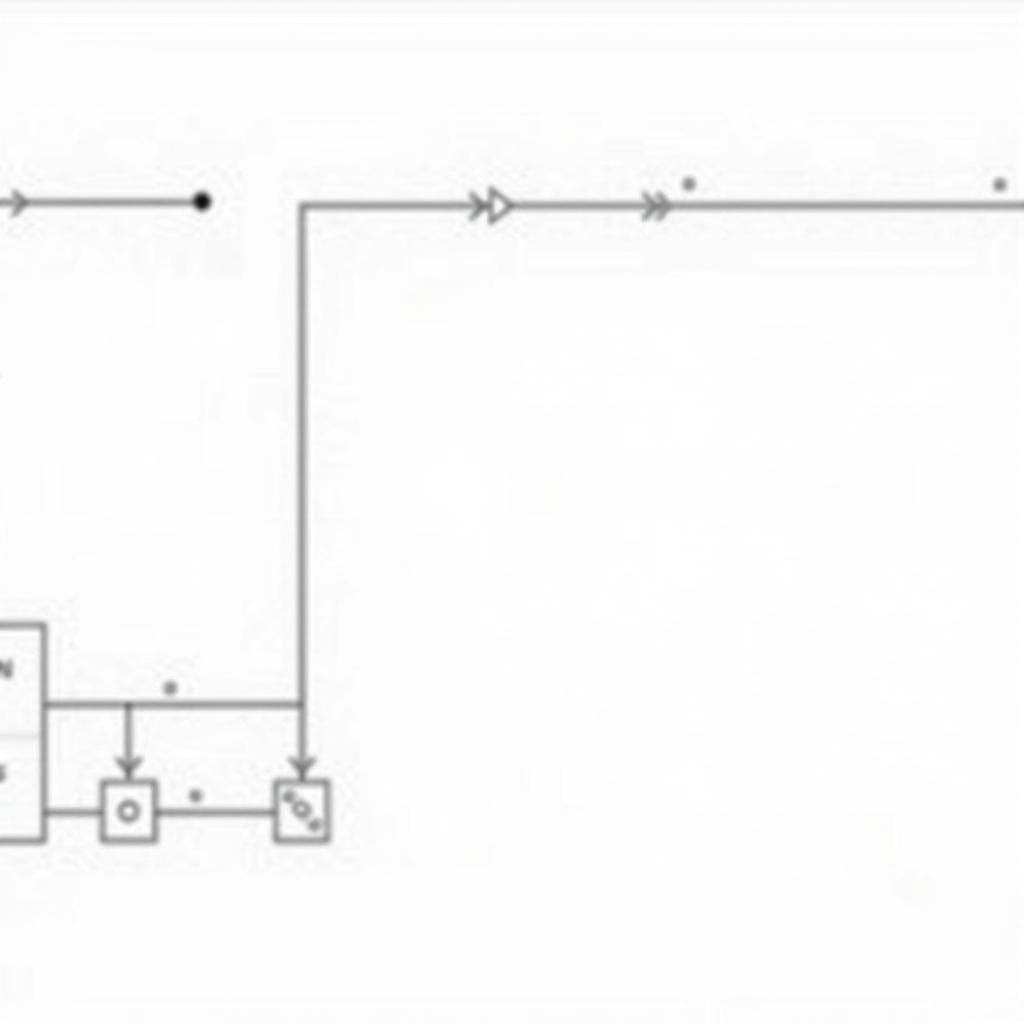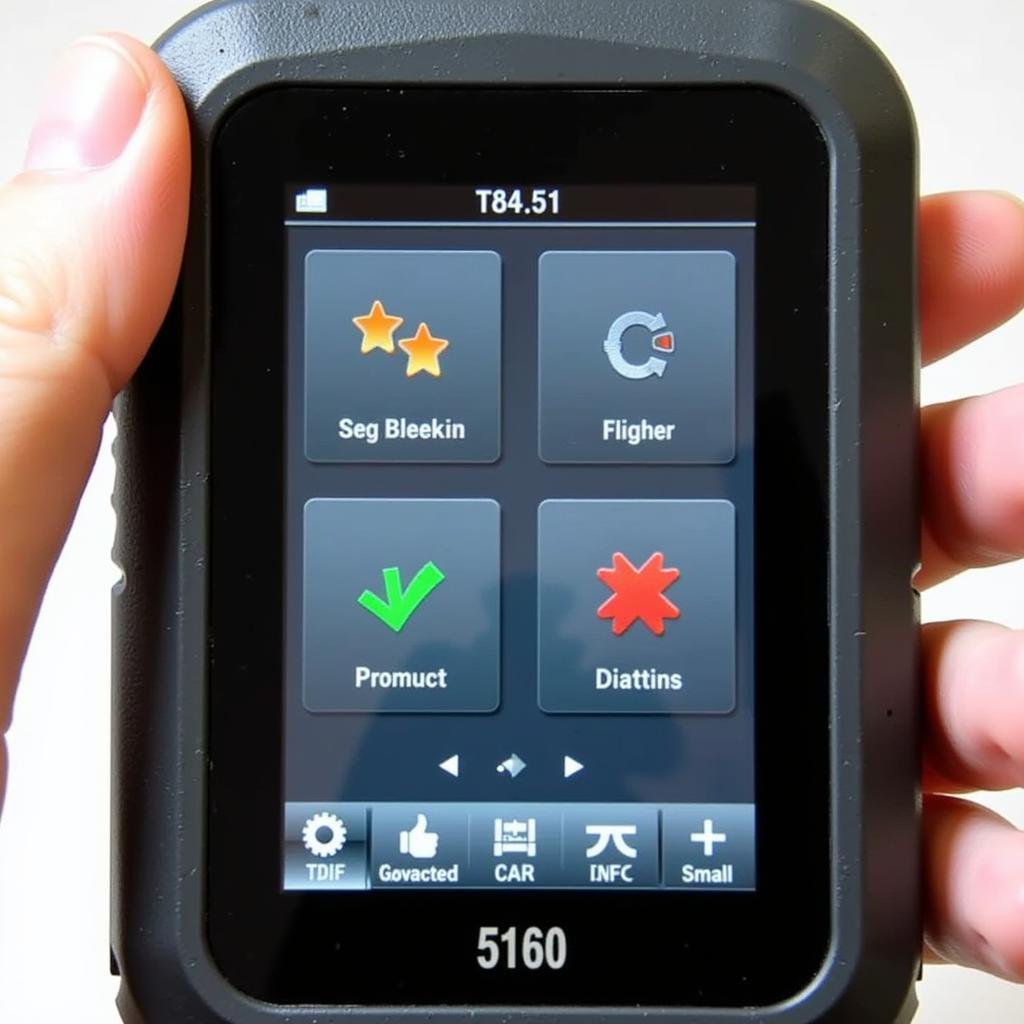Knowing How To Test A Map Sensor With A Scan Tool is a crucial skill for any car owner or mechanic. A malfunctioning Manifold Absolute Pressure (MAP) sensor can lead to a variety of performance issues, from poor fuel economy to a rough idle. Testing it with a scan tool offers a quick and effective way to diagnose the problem.
Checking your MAP sensor with a diagnostic tool isn’t as intimidating as it sounds. It’s a straightforward process that can save you time and money. For those unfamiliar, this guide will walk you through the steps involved in testing a MAP sensor using a scan tool. Want to learn more about general sensor testing? Check out this helpful resource on scan tool sensor test.
Understanding the MAP Sensor and its Importance
The MAP sensor is a critical component of your vehicle’s engine management system. It measures the air pressure inside the intake manifold and sends this information to the Engine Control Unit (ECU). The ECU uses this data to calculate the optimal air-fuel mixture for combustion, ensuring efficient engine performance.
Why Test a MAP Sensor?
A faulty MAP sensor can cause a range of problems, impacting both performance and fuel efficiency. Symptoms of a bad MAP sensor include:
- Rough idle
- Reduced engine power
- Hesitation or stumbling during acceleration
- Poor fuel economy
- Check Engine Light illumination
How to Test a MAP Sensor with a Scan Tool: A Step-by-Step Guide
Before beginning, ensure your vehicle’s ignition is turned off and the scan tool is properly connected to the OBD-II port.
- Turn the ignition key to the “on” position (do not start the engine). This powers up the ECU and allows the scan tool to communicate with the vehicle’s systems.
- Connect the scan tool to the OBD-II port. Usually located under the dashboard on the driver’s side.
- Turn on the scan tool and select your vehicle’s make and model. This ensures the tool uses the correct communication protocol.
- Navigate to the “Live Data” or “Data Stream” section. This displays real-time sensor readings.
- Locate the MAP sensor reading. It’s usually displayed in kPa (kilopascals), psi (pounds per square inch), or inches of mercury (inHg).
- Observe the MAP sensor reading at idle. With the engine off, the reading should reflect atmospheric pressure (around 100 kPa or 14.7 psi). With the engine running at idle, the reading should typically be between 30-70 kPa or 4-10 psi.
- Slowly increase the engine speed. The MAP sensor reading should increase proportionally with engine speed and load.
- Check for erratic readings or readings that don’t change. These indicate a potential problem with the MAP sensor.
 Scan Tool Displaying MAP Sensor Data
Scan Tool Displaying MAP Sensor Data
For specific applications, you might need a specialized scan tool. For instance, for Briggs and Stratton EFI engines, a dedicated Briggs and Stratton EFI scan tool can be highly beneficial.
Interpreting the Results
- Low MAP sensor readings: Could indicate a vacuum leak, a restricted air intake, or a faulty MAP sensor.
- High MAP sensor readings: Could suggest a problem with the exhaust system or a malfunctioning EGR valve.
- Erratic or unchanging readings: Often point to a failing MAP sensor.
If you’re experiencing issues with scan tool readings, consider checking resources like “scan tool says reading fail” for troubleshooting tips.
“Regularly checking your MAP sensor is essential for maintaining optimal engine performance. A simple test with a scan tool can prevent more serious issues down the road.” – John Miller, Automotive Engineer
If the MAP sensor readings are outside the normal range, you may need to replace the sensor. Consult your vehicle’s repair manual for specific instructions. Some vehicles, like Polaris ATVs, UTVs, and snowmobiles, might require a specific Polaris ATV UTV Snowmobile scan tool for more advanced diagnostics.
Conclusion
Testing a MAP sensor with a scan tool is a relatively simple procedure that can help you diagnose potential engine problems. By understanding how to interpret the readings, you can identify a faulty MAP sensor and take the necessary steps to restore your vehicle’s performance and fuel efficiency. Contact ScanToolUS at +1 (641) 206-8880 or visit our office at 1615 S Laramie Ave, Cicero, IL 60804, USA for further assistance or if you need a new VCM 2 scan tool.
FAQ
- What is the normal MAP sensor reading at idle? Typically between 30-70 kPa or 4-10 psi.
- What does a low MAP sensor reading indicate? A potential vacuum leak, restricted air intake, or a faulty sensor.
- Can I clean a MAP sensor? Yes, you can try cleaning it with electronic contact cleaner.
- How much does a MAP sensor cost? Generally between $20 and $100.
- What happens if I drive with a bad MAP sensor? You might experience reduced fuel economy, poor performance, and potential engine damage.
- Can a bad MAP sensor cause the Check Engine Light to come on? Yes.
- Where can I find information on a VCM 2 scan tool? You can find information at VCM 2 scan tool.


